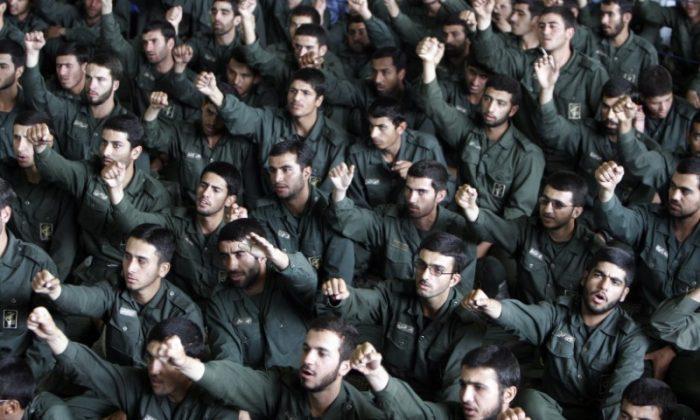A controversial group that once waged war inside Iran against the current regime says its new book reveals a network of underground and secret sites being used there to develop nuclear weapons.
“The nuclear weapons program of Iran is a crucial issue that is often underestimated,” says the National Council of Resistance of Iran, in a note announcing its new report detailing the Iranian nuclear program.
The group’s new book claims to detail how Iran uses its civil nuclear program to cover up and support a weapons program that has remained active at several military facilities that are inaccessible to International Atomic Energy Agency (IAEA) inspection.
“Many aspects of this operation have been kept hidden by The Islamic Revolutionary Guards Corp. (IRGC) from the prying eyes of both the world and the United Nations,” it claims.
The group, which is also known as the People’s Mujahedin of Iran, revealed details of Iran’s uranium enrichment program in 2002 and triggered the IAEA inspections of the Iranian nuclear sites. It has since made other claims about the hidden nuclear facilities in Iran, some of which have been supported by experts while others have been questioned.
The report is currently only available as a paperback book on Amazon.
Titled: Iran’s Nuclear Core: Uninspected Military Sites, Vital to the Nuclear Weapons, the book’s description promises details on how the nuclear weapons program is at the heart, and not in parallel, to the civil nuclear program of Iran.
“The program is run by the Islamic Revolutionary Guards Corp. (IRGC) since the beginning, and the main nuclear sites and nuclear research facilities have been hidden from the eyes of the United Nations nuclear watchdog,” it reads.
The group claims the IRGC’s control of the Organization of Defensive Innovation and Research is still intent on nuclear weapons development. The new report claims the research organization, called Sazman-e Pazhouheshhaye Novin-e Defa’i in Persian and better known by its acronym SPND, has 7 subdivisions working on different portions of nuclear weapons research.
The report puts the sites within military facilities which limit IAEA access.
These installations have “large and extensive underground tunnels and facilities shielding the sites from inspections, as well as having the ability to quickly move things around if and when needed.”
“Some of the top nuclear experts who have played a crucial role to advance the program have senior ranks in the IRGC,” it reads.
Meanwhile, the group making the claims has a long and complex history. The People’s Mujahedin of Iran was listed as a terrorist organization by the United States until 2012 but has undergone dramatic changes in ideology.
When it was founded in 1965, it was a radical Islamic group heavily influenced by Marxism with strong anti-American sentiments.
After the Islamic revolution, the group was targeted by the Iranian regime when Ayatollah Khomeini moved in to wipe out dissent. The group took up armed struggle against the regime and was eventually forced out of the country.
Today, it is often seen as an ally of the United States and a source of intelligence inside Iran. It has also moved from having an anti-Zionist, anti-Israel stance to sometimes being seen as an ally to Israel, focused on killing Iran’s nuclear scientists.
Sometimes called the Iranian Resistance, the group has been monitoring the Revolutionary Guards involvement in nuclear weapons development for two decades.
The group notes that senior ranking Iranian officials continue to make public statements that the IAEA will be refused access to inspect military sites.





